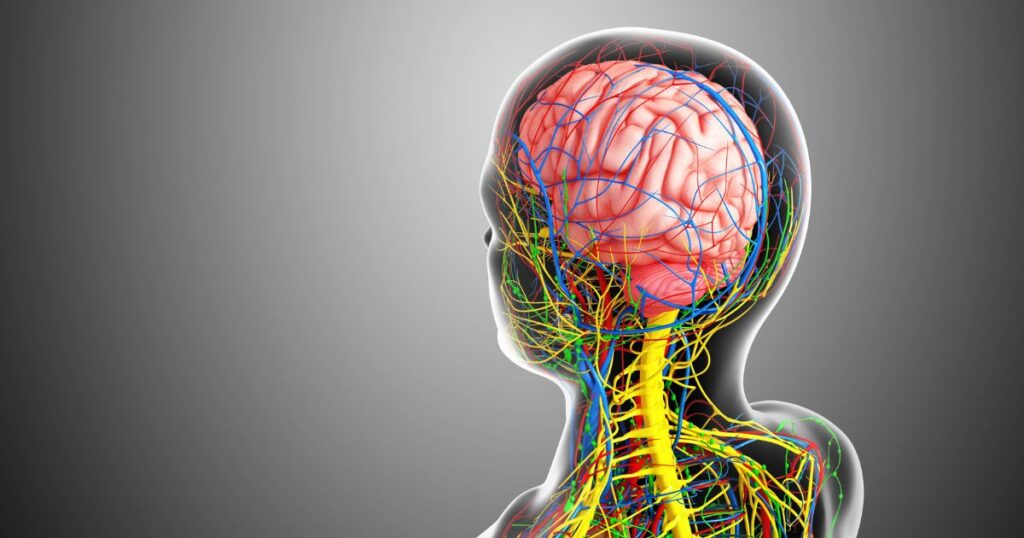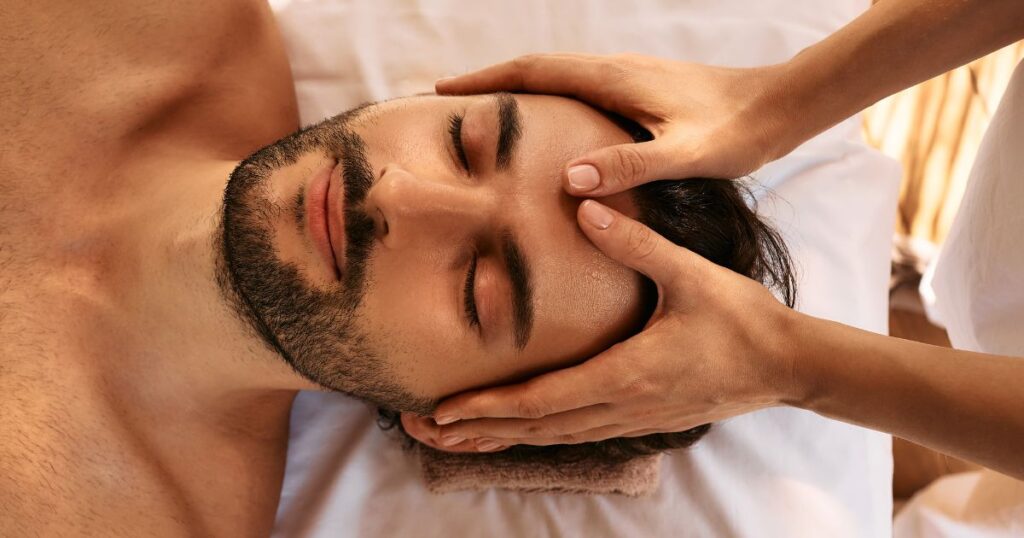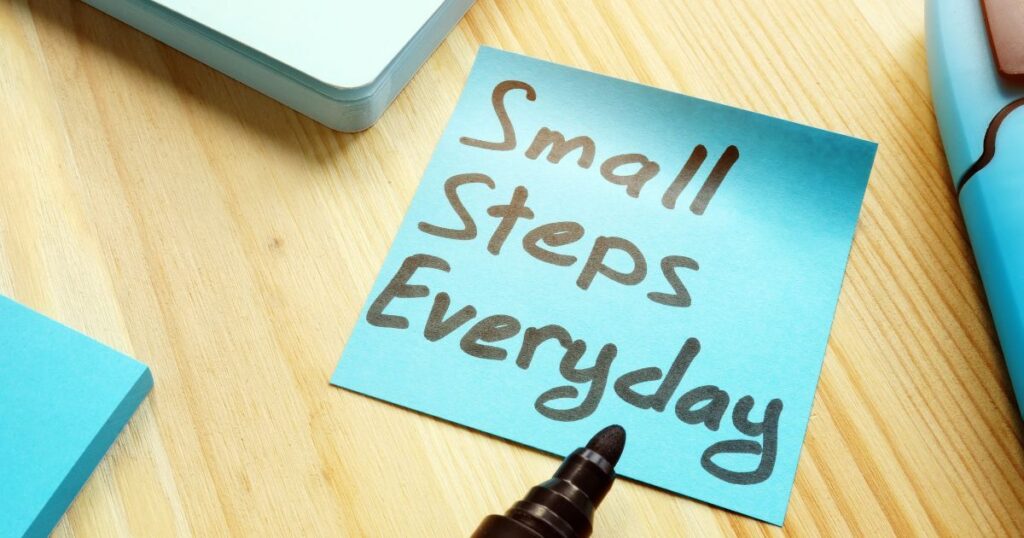Are you achieving wellness? What does it mean to achieve mental health & wellness? What measuring stick should you be using? Who decides what mental health & wellness looks like for you?
These are really important questions, but we need to start with redefining wellness. The dictionary defines wellness as “the quality or state of being in good health, especially as an actively sought goal”. But who decides what “good health” looks like? There are many experts who define good health in vastly different ways. Trying to achieve wellness by someone else’s definition of good health can lead to disappointment and struggle.
—> I define wellness as a practice. It is practicing healthy habits that lead to good mental, emotional & physical health every day. It is discerning what good health looks like for YOUR body and mind.
As a stress management coach & corporate wellness trainer, I have supported thousands of people in their wellness practice, creating healthy habits that lead to a reduction in stress, improved mental health, better relationships, and a life full of joy and freedom.
You can achieve wellness too.
What you will learn about achieving wellness:
In this article, I will share with you:
- Why achieving wellness is the journey & not the destination
- How your biology plays a pivotal role in achieving wellness
- The six pillars of self-care that are foundational for achieving wellness
- Why learning to trust your body is key to building a wellness practice
- How to start a daily habit of wellness
- Resources & next steps to achieving wellness & improving your mental health
Why achieving wellness is the journey & not the destination
Every person begins their wellness journey from a different place. Some people already have established practices of wellness and are trying to build upon the good habits they already have, while others have zero consistent practices for wellness. There are also thousands of places in between.
Then there is a matter of circumstances. Some people have circumstances that make achieving “normal” wellness goals impossible: chronic health or stress, dealing with microaggressions every day, toxic environments, constant financial struggle, or a lifetime of trauma & survival.
Having a standard destination does not take into consideration where each individual is in their journey & circumstances.

One of the things I have learned about goals over the years is that effective goals are daily practices rather than long-term outcomes. They are small improvements rather than big, sweeping changes. This is backed by a lot of neuroscience & research, and improving our mental health or wellness requires the same effective approach.
When we look at wellness as a journey and a daily practice of healthy habits, we can achieve wellness easily.
How your biology plays a pivotal role in achieving wellness
We can’t talk about wellness (physical, mental, or emotional) without talking about our biology. Educating ourselves about how our body works is key to understanding why our biological processes affect our experience of wellness.
I teach about our human biology at every corporate wellness event & with every coaching client, because it is the key to improving our mental health, reducing our stress, and feeling happy and well.
Specifically, understanding your nervous system and how it contributes to your well-being will help you achieve wellness. I am sure you have some familiarity with the nervous system, but let’s discuss the basics.
The nervous system includes your brain, spinal cord, and a complex network of nerves that exist all over your body. This system is our unconscious & automatic communication system between the body and the brain. It takes in sensory input, feeds the brain data, and then the brain tells the body what to do. This is happening all the time automatically & unconsciously.

The nervous system controls things like your heart rate, breathing, digestion, and thousands of other life-saving functions. It has a lot of jobs, but its primary job is to support your survival. It will do whatever is necessary to ensure you survive.
This system is so intertwined with our wellness, that you can’t separate them. In fact, the way I define mental health is the practice of nervous system regulation. When your nervous system is functioning properly (in regulation), you experience good emotional & mental health. You feel safe, happy and hopeful. You feel connected and have enriching social systems. You can manage stress & challenges and feel resilient in the face of them.
A good wellness practice must include nervous system regulation.
The Mental Health Toolkit™ I am working on will provide the education and tools necessary to regulate the nervous system. You can get on the waiting list here. You can also find a lot of information online about nervous system regulation. Be sure to check out the resource section below.
There are two big parts to the nervous system. The sympathetic nervous system is the part of our nervous system that perceives threats and stimulates us into action. It is in charge of our survival or stress responses. Things like fight, flight, or freeze. The parasympathetic nervous system is the part of the nervous system that acts like a “brake” on our stress responses. It moves us back into homeostasis or our “rest and digest” state.
In a regulated nervous system, we get activated or triggered and then move through the complete stress cycle (sympathetic and parasympathetic). This is healthy. Our goal is not to be stress-free – instead, we want to naturally cycle back and forth between a stress response and rest.

You can think of the sympathetic nervous system as our gas pedal. It mobilizes us for action. It is in charge of our motivation. In an extreme response, it helps us fight or flee for survival, but in daily life, it also helps us get up in the morning & tackle our to-do list.
You can think of the parasympathetic system as our brake pedal. It stops us so we can rest and digest. It helps us find balance and peace of mind. It helps us feel satisfied and happy.
Like when driving a car, we need both pedals to drive our lives. If either pedal gets stuck we either stop moving or we run off the road.
When either our gas pedal (sympathetic) or brake pedal (parasympathetic) gets stuck, we call this dysregulation. And the truth is most people live in a dysregulated nervous system.
Some of the symptoms of being stuck in the sympathetic nervous system:
- Anxiety
- Worry or Obsessive thinking
- Chronic stress
- Hypervigilance
- Not able to set boundaries
- Insomnia
- Struggles with digestion & GI problems
- Hormone imbalance
- High levels of anger
- And so much more
Some of the symptoms of being stuck in the parasympathetic nervous system:
- Depression
- Lack of motivation
- Extreme or chronic fatigue
- Isolation and social disconnection
- Dissociation
- Too much sleep
- Struggle with making decisions
- Emotionally numb
- Sense of Dread
- And so much more
You will notice that some of the symptoms we see with mental health challenges are the same symptoms for nervous system dysregulation.
This is why to achieve wellness, we have to learn to regulate our nervous system.
The six pillars of self-care that are foundational for achieving wellness
Sometimes, we want to create big wellness goals, but we forget some of the basics. There has been a lot of neuroscience & research done on foundational steps to improve our mental & physical health. I like to teach the six pillars of self-care. These focus on supporting our biology, which has to come first.
As we briefly talked about above, our biology, and particularly our nervous system is designed to support our survival. In the event of a disagreement between our body and our mind, the body will ALWAYS win. Our body is smarter and in control of our survival. When our survival responses are triggered, our rational mind goes offline. No amount of conscious thought or will can override our automatic survival mechanisms.
This is just one of the reasons I am a champion for working with our biology instead of against it.

Supporting our biology is the mission of real self-care. The science is pretty clear that there are six pillars of self-care:
- A healthy sleep routine
- Getting enough sunlight & darkness
- Good nutrition for our unique body
- Movement
- Stress management
- Healthy social connection
There is a lot of information on each of these, but I am going to give you the highlights.
A healthy sleep routine: Sleep is the most important aspect of self-care. Proper sleep improves mental, emotional & physical health. On a physical level, during high-quality sleep, we experience physical healing, detox removal, and system maintenance. On a mental and emotional level, when we get enough sleep we feel more resilient and able to handle adversity, stress & challenge.
There is a lot of science around how sleep affects our biology, but what I will share today is the results of that research.
Most of the research agrees that a good sleep routine means 6-8 hours of sleep for a healthy adult. If you are dealing with chronic stress or illness you need even more sleep. It also means you are going to bed around the same time every day and getting up around the same time every day. The earlier you go to bed, the better your quality of sleep.
Ideally, you want to have a goal for bedtime and then stay within a two-hour window every night. So if your goal is 10:30 pm, you want to try to always go to bed between 9:30 pm-11:30 pm. This includes weekends. You want the same two-hour window in the morning.
Consistency in your sleep routine will help you reach your optimal performance and improve your mental health.
Getting enough sunlight & darkness: In general, you want to step outside and view the sun first thing in the morning and several times during the day. You want to view it directly not through a glass window or windshield and you can use your glasses or corrective lenses.
In addition to sunlight, the latest neuroscience research shows you also need 6-8 hours of complete darkness at night. This means removing any small lights from TVs or other electronics. You can also use a comfortable sleep mask to block out all lights during the night.
Our optical systems are directly connected to our nervous systems. They activate or deactivate our stress responses and have a big effect on our health & well-being.
Good nutrition: There are many diverse viewpoints about what constitutes good nutrition, but across the board eating right for your body is a key to good self-care and achieving wellness.

We each have an internal compass for what feels right to our own body. When you eat food that fuels you, you feel good. When you eat food that is misaligned with your body, you feel heavy, bloated, or tired.
In general, natural, unprocessed foods are better than processed foods. A balanced diet is better than an unbalanced diet. Some people thrive on Keto or Carnivore diets, while others thrive on plant-based diets. Some people need to stay away from grains and sugars, while others need a balanced diet that includes grains and sugars.
Going on the journey of finding the right nutrition for you is a great wellness practice.
Movement: Having a daily movement practice is key to self-care. Mindful movement is even better. What is mindful movement?
Mindful movement is engaging in movement while placing all of your attention (as much as you can) on the movements of your body and breathing.
There are huge benefits to mindful movement, and the best part is that it doesn’t matter how you move!
You can dance, walk, or stretch. You can do yoga or run on a treadmill. You can do micro-movements or intense exercises, as long as your attention stays focused on your body and breath.
This is different than going on a run and listening to music or a podcast, and different than letting your mind wonder or strategize.
Even 15 minutes a day of mindful movement can be an effective wellness practice.
Stress Management: Managing stress is a huge part of wellness & mental health. This is a big topic in and of itself, so I am just going to say this: to truly manage stress, you have to practice nervous system regulation.
No matter how much change you make in your circumstances or environment, if your nervous system is activated or dysregulated, you will not be able to effectively manage your stress. I will create many more articles specifically on this, and update as I do.

Healthy Social Connection: Healthy social connection means having relationships where you can be yourself, where there is reciprocity, and where you feel safe and comfortable. Establishing even a few of these connections can impact your mental health & well-being.
On the other side, you also want to minimize unhealthy social connections – relationships with people that don’t feel safe, are toxic, trigger you, are critical of you, or where you can’t be yourself.
Sometimes we can’t avoid these relationships, but we can minimize our time with them.
Minimizing time with people who cause you stress is as important as spending time with people who feel safe & who bring you joy. You want to do both as part of your wellness practice.
Why learning to trust your body is key to building a wellness practice
One of the things I have seen working with thousands of people around their stress and well-being is that most people don’t trust their bodies. When their body responds in a way they don’t like, they do everything they can to suppress it or control it. Eventually, they feel at war with their body.
Working against our body is ineffective, but learning to honor our body will give us better results.
For instance, when I am working with a client around stress, the best and most effective solutions honor the stress response that their body is having. If we know that their nervous system is perceiving a threat and responding to it effectively, we can appreciate their body and its power.
Then we can honor their biology, learning to put their body’s natural “brake” on stress. Together, we can look at why they are having a stress response or patterns of chronic stress, honoring that their body is trying to help them survive and is not the problem.
This is an effective and compassionate approach to stress management.
It is also true for many mental health challenges. The body is trying to cope with its stressors, inside and outside. When the body can’t metabolize the stressors enough, the body is overwhelmed, and physical, emotional, and mental symptoms show up.
The body is prioritizing what it needs to do for survival. It can be inconvenient and uncomfortable, but when we recognize our body’s wisdom, we can create wellness practices that rebalance our body and mind.

The other reason trusting the body is so important, is that each one of us is unique. There is no one-size-fits-all in achieving wellness. Your body has different needs than other people: different foods will nurture your body but hurt others, and different physical exercises will improve your mental health but may harm someone else’s.
When you trust your body, you can find the right goals and practices unique to you.
You can achieve wellness by honoring your body’s wisdom and working with your body instead of against it.
How to start a daily habit of wellness
Start small: there has been a lot of research done around goal setting and one of the the things that has been concluded, is that our brain learns best when we succeed at something 85% of the time and fail only 15% of the time.
I think this is important in goal-setting. How many times have you set a goal so big, you fail more than 15% of the time?
With my clients, I like to help them look at what they are already doing well. When you look at your current healthy habits and skills, you can set goals that build off of your strengths.
Start with the basics first: If you head back up to where I talk about the six pillars of self-care, how much of the basics are you already doing? If you have bad sleep habits, start there first. Getting a good sleep routine will automatically increase your mental, physical, and emotional health.
If you aren’t doing regular movement or any mindful movement, this is a great place to start a wellness practice. Even 15 minutes a day can improve your wellness. Commit to taking one mindful 15-minute walk every day, in the morning, during your lunch break, or at night.

I also highly recommend a stretching routine before bed, it gets both your mindful movement in and improves your sleep.
Find the best time of day for you: Set yourself up for success. If you struggle to be consistent in your schedule, find the best time of day for you to build a healthy habit.
Many people find first thing in the morning or last thing at night is a good time to set up a wellness practice, but you have the find the best time that works for you.
Begin with small increments of time: a lot of people try to set up wellness practices that take hours, but I recommend starting with just 15 minutes a day.
Once you have that habit set and you are succeeding with it more than 85% of the time, build on it by increasing the time or adding a new habit.
Resources & next steps to achieving wellness & improving your mental health
I think the first step is determining your first goal: what small wellness practice do you want to begin today?

—> If you need extra support with your wellness goals, here are a few resources:
For nervous system self-regulation tools: Sign up for the Mental Health Toolkit. Launching soon, this private podcast course is packed with 30 tools for nervous system regulation, education, and stress management tips.
For customized 1:1 support: Learn more about my stress management coaching program, designed to help you reduce stress, improve your mental health & set up the right wellness practices for you.



